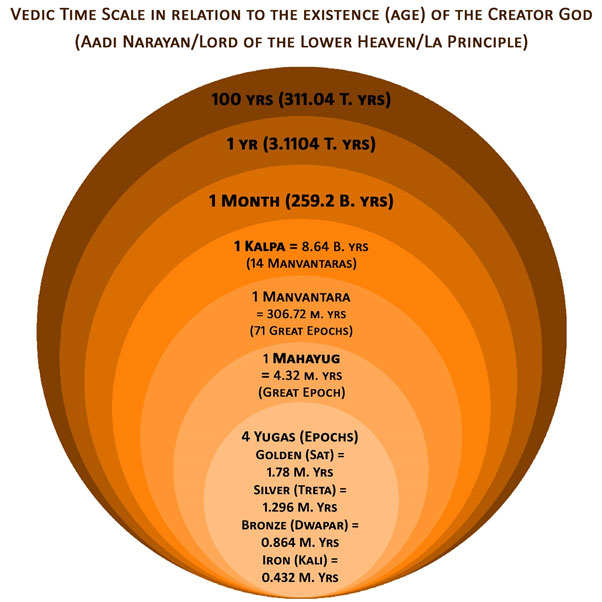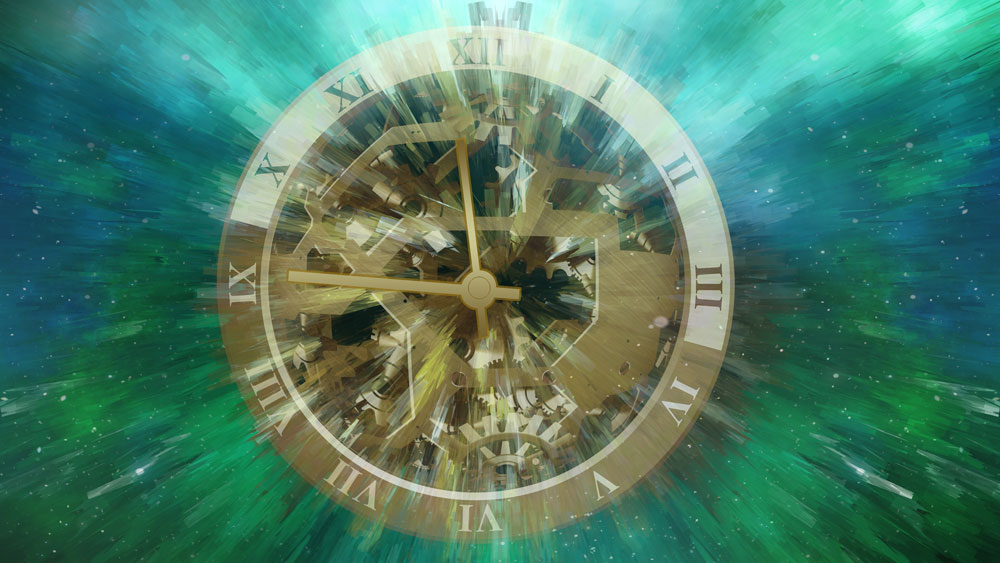A Spirituo-Scientific Synthesis
A Peep into Concepta-Historica
With the manifestation of the Cosmos and the Universes, Astronomy and Physics’ space-time concept came into existence. It represents a combination of the three dimensions of space and the fourth dimension of time, making it a single four-dimensional manifestation. This was first postulated by the mathematician Hermann Minkowski in 1908 by reformulating Albert Einstein’s special theory of relativity (1905), essentially a conceptual model combining the three dimensions of space with the fourth dimension of time.
The question that can pop up in our minds is, ‘is the space-time time scale different from the Earth time scale’? Einstein’s theory of special relativity tells us that motion through space creates alterations in time flow. This alteration is known as ‘time dilation’. In space, when we move faster through the three dimensions, the slower we are moving through the fourth dimension of time. Therefore, time measures differently for one who moves through space and one who stays put on Earth. The clock in motion will tick more slowly than the clocks on Earth. If one travels at the speed of light, more pronounced will be the effects.
Western Science and Indian Spiritual Science
Western Science and religion are inimically opposed to each other, and so is the outlook of blind followers of western Science in India. Logical Science and spirituality in India are never at crossroads. Fundamentally, they are not opposed to each other. To the analytical minded, both represent a search for the ultimate unified truth and enlightenment. This fact had inspired Hinduism initially and later, even Buddhism and Jainism. In a scientific approach of Hinduism, understanding the external reality is dependent on an understanding of the Creator Principle (God). The appearance of Gods and humanity is always after the formation of the Universe.]
Time Measurement Now and then
Scientific Time Measurement
Scientific calculation of time on Earth is in terms of seconds, minutes and hours. Until 1955, the micro-level standard was based on the Earth’s rotation period. Accordingly, a second was determined as 1/86400 of the mean solar day. Later, a revision had to be made by the International Astronomical Union with the realization that the Earth’s rotation is irregular and is slowing down. The revised definition of a second accordingly stands as 1/31.5569259747 of the solar year in progress on the noon of December 31, 1899. This modification got adopted in 1956. Accurate time measurement was made possible by the construction of a high precision Caesium-beam atomic clock. Accordingly, the definition of a second in the International System of Units’ measurement got based on the duration of the radiation corresponding to the transition between two hyperfine levels of the Caesium atom’s ground state.
A Quantum Clock constructed in the present century has rectified the error. Simultaneously, minuted units of time got established by scientific research named as the femtosecond (1999) and the attosecond. A femtosecond (one quadrillionth of a second) is to a second what a second is to 31.71 million years, while an attosecond (one quintillionth of a second) is to a second what a second is to 31.71 billion years. As late as 2013, more accurate Optical Lattice Clocks have replaced Quantum Clocks. The OLC contains about 10000 atoms and does not differ in time. The OLC, as per calculations, is not expected to gain or lose a second at least for the next 15 billion years.
It is only as recent as 2020, Professor Reinhard Dörner’s team in Goethe, Germany, has measured a much shorter time of a Zeptosecond. The zeptosecond is a trillionth of a billionth of a second (10-21). This is the time taken for an X-ray derived photon using a PETRA 111 laser to cross through the shell of a hydrogen molecule (H2); the time taken for the photon to hit the two hydrogen atoms one after the other, releasing two electrons. It was measured as 247 zeptoseconds. They used a tool called COLTRIMS (Cold Target Recoil Ion Momentum Spectroscopy Reaction Microscope).
Again, another unit of time measure discovered in Germany is a yoctosecond. According to calculations by physicists in Germany, light pulses emitted by an exotic state of matter known as a quark-gluon plasma last for just a few yoctoseconds. One yoctosecond is one-trillionth of a trillionth of a second (10–24 s) and is comparable to the time it takes light to cross an atomic nucleus.
The shortest possible theoretical time, the Planck time is when it takes for a photon to travel a distance equal to the Planck length: = 1.62 × 10-35 m. and is the shortest possible time interval that can be measured. With its associated Planck length, the Planck time defines the scale at which current physical theories fail.
With all possible sophisticated gadgets at their command, Science took all the time from the beginning of creation until now to develop these shorter time measures.
Vedic Concept of Time

Vedic concept of time further elaborated in the Puranas is as imposing as time itself. The Vedic (Hindu) concept of time finds expression in terms of billions and trillions of years. As against this, other cultures base their cosmologies in terms of a few hundreds or thousands of years. The glorious ancient sages (Rishis) who inhabited the Earth from the beginning of creation had extraordinary powers of perception and understanding of Cosmos and creation. They had propounded the cosmos’ cyclical Nature, a concept accepted by modern scientists only after encountering Big Bang’s astronomical phenomenon. Before that, they had believed in the idea of a linear universe.
Understanding from antiquity
As members of a particular solar system in the Milky Way galaxy, we know only of a specific Big Bang that brought forth our Universe. The Big Bang that brought forth our Universe is about 13.7 billion years old. We were unaware of universes other than ours and had subscribed to the idea of only one single Universe inhabited by us. Ironically, all advanced and sophisticated astronomical instruments and telescopes at our command have only helped us understand 5% of our Universe. The remaining 95% remains out of our reach and understanding. It is only recently that Science has come to accept the possibility of many more bubbles like our Universe, giving rise to a multiverse concept. Vedas have talked about many universes coming into existence and undergoing dissolution continuously. What a tremendously intuitive, perceptive power of those early Vedic seers who could fathom such astronomical facts that Science, with all its powerful pieces of equipment, is only coming to realize lately.
The Hindu chronology does not base its calculations on mundane events like the birth of a person, the coronation of a king, or an emperor’s military success. The Vedic chronology is based on Astronomical Science and relates to the movements of various celestial bodies. This chronology is, therefore, incredibly scientific and not linked with any worldly or personal events.
The Hindus (based on their Vedic and Mythological scriptures) describe time units from an infinitesimal truti, lasting 1/1,000,0000 of a second, to a mahamanvantara of 311 trillion years. Hindu sages have described time as cyclic, an endless procession of creation, preservation and dissolution. Carl Sagan and other scientists have expressed amazement at the accuracy of space and time descriptions given by the ancient rishis and saints, who fathomed the secrets of the Universe through their mystically awakened senses.
Recognition of Early Hindu Cosmology
Late Professor Arthur Holmes, a Geology professor at the University of Durham, writes thus about the Earth’s age.
“Long before it becomes a scientific aspiration to estimate the age of the Earth, many elaborate systems of the world chronology had been devised by the sages of antiquity. The most remarkable of these occult timescales is that of the ancient Hindus, whose astonishing concept of the Earth’s duration has been traced back to the Manusmriti, a sacred book.” Prof. Holmes was astounded by the Hindu calculation of the age of the Earth and the expanding Universe. Moreover, the precision with which the Hindu calculation regarding the age of the entire Universe got deciphered would keep any man spellbound”.
A look into Hindu Cosmology
Hindu cosmography, though born in antiquity, appears surprisingly modern in more than one way. India’s concept of time was never limited to a few thousand or millions of years. Ancient Indian sages had computed the Earth’s age at over two billion years. According to Hindu cosmology, our present era is known as the seventh Manvantra. While the Indian seers could contemplate billions of years, the West needed much scientific evidence to think of such enormous time scales.
While the religious West remained stuck in a concept of a 6000-year-old universe, India had from antiquity envisioned ages and eons and innumerable galaxies. Contemporary Western Science has just discovered a Universe of astronomical proportion that requires distances to be measured in abstract light-years. To the ancient Hindus, this was a child’s play knowledge and had conjured up with a measure of ‘Kalpa’ to represent an inconceivable time duration.
It is not new to world religious scholars that Hindus and Buddhists count time in kalpas (segments of millions of years). Ancient Hindu seers had inferred the Earth to have formed billions of years ago.
Apparently, India holds a massive cosmological view; they firmly believe that humans have existed for trillions of years, in varying stages of existence. And further, over time, humans will continue to populate the many universes again and again.






Monisha
June 13, 2021 — 5:01 pm
Interesting